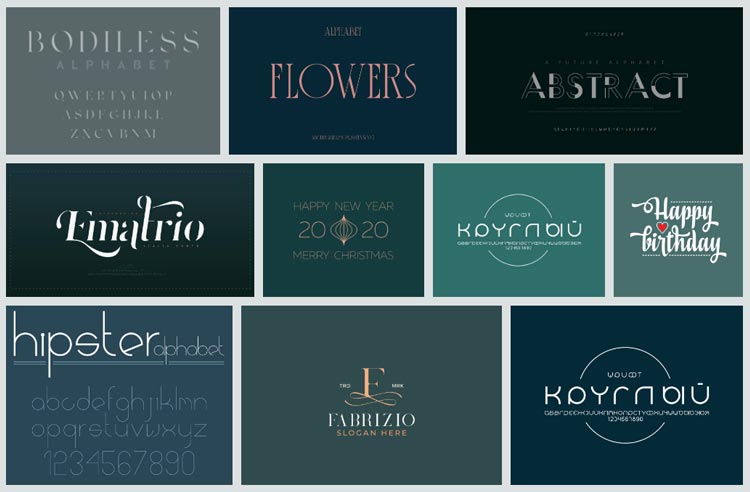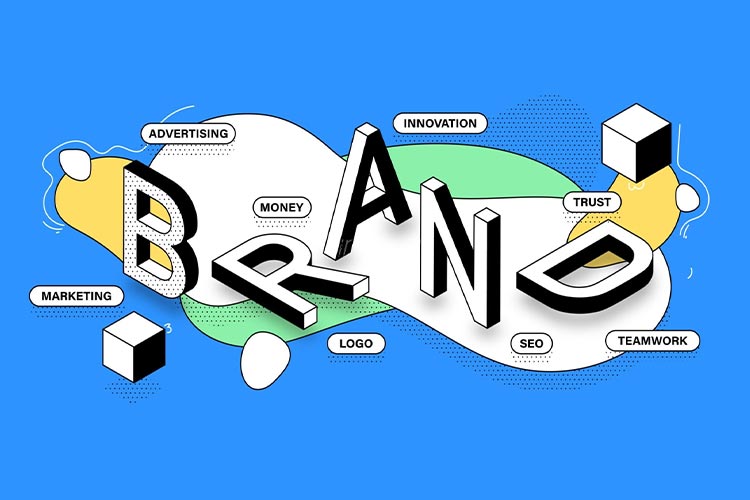Visual branding is an exciting and powerful way for companies to differentiate themselves and make a lasting impression on their customers.
It’s your brand’s visual voice, and it speaks louder than words. From the fonts and colors, you use to the images and graphics that represent your business, every element of your visual branding tells a story about who you are and what you stand for.
It’s what sets you apart from the competition and helps you connect with your target audience on a deeper level.
Whether you’re a small start-up trying to make a splash in a crowded market or a global corporation looking to refresh your image, visual branding is a valuable tool that can help you achieve your business goals.
In this article, we’ll delve into the elements of visual branding, share best practices for creating a cohesive and compelling visual identity and showcase some real-world examples of companies that have successfully used visual branding.
Are you ready to elevate your brand’s visual game? Let’s get started!
Definition of Visual Branding
‘Visual branding refers to the use of visual elements, such as logos, colors, typography, imagery, and layout, to represent and communicate a company’s brand identity and values to its target audience. It encompasses everything from the look and feel of a company’s website and marketing materials to the design of its physical storefront or office space.’
Importance of Visual Branding in modern business
Well, it’s more important than ever in today’s competitive and fast-paced business world.
Many companies are vying for customers’ attention and loyalty, and having a strong and consistent visual identity can help your business stand out and make a lasting impression.
Visual branding can help you build brand recognition, establish trust, and differentiate your company from the competition.
It’s also a key tool for building and maintaining a strong brand image and reputation.
Elements of visual branding
1) Logo
A logo is a graphical element that, together with its logotype (a styled typeface) or emblem, forms a trademark or commercial brand.

Logo is the central element of a complex identification system that must be functionally extended to all communications of an organization.
A logo is the face of the company, and it should be memorable, simple, and relevant to the company’s target audience. Some examples of famous logos include the Nike “swoosh,” the Apple “apple,” and the Coca-Cola “dynamic ribbon.”
2) Color scheme
Color is a powerful tool that can evoke emotion, influence perception, and enhance brand recognition. Choosing the right colors for your brand can significantly impact how customers perceive and interact with your business.

For example, red is often associated with excitement and energy, while blue is often associated with calmness and reliability.
3) Typography
Typography refers to the art and technique of arranging type to make written language legible, readable and appealing when displayed.
Choosing the right font and styling for your brand can help create a unique and cohesive visual identity.

For example, a company that sells luxury products might choose a sophisticated and elegant font.
In contrast, a company that sells fun and playful products might choose a more casual and playful font.
4) Imagery and graphics
These can include photographs, illustrations, and other graphics that help communicate your brand’s message and values.

Choosing the right imagery and graphics can help reinforce your brand’s identity and make your marketing materials more engaging and effective.
The layout and composition of your marketing materials, website, and other visual assets is another important aspect of visual branding.
The way elements are arranged and presented can greatly impact how customers perceive and interact with your brand.
For example, a clean and organized layout might convey a sense of professionalism and efficiency, while a cluttered and chaotic layout might convey a sense of disorganization and inconsistency.
Now you have read the elements of Visual branding but if you want to create a visual branding strategy that really stands out? Check out these best practices from industry experts.
Best practices for visual branding
From consistency to adaptability, these best practices will guide you in creating a visual identity that truly represents your brand and helps you achieve your business goals.
Consistency
It’s important to use the same logo, colors, typography, imagery, and layout across all of your marketing materials, social media channels, and other touchpoints to create a cohesive and recognizable visual identity. This helps customers easily identify and associate your brand with your products and services.
Originality
While it’s essential to be consistent, it’s also important to stand out and be unique. Try to find ways to differentiate your brand from the competition through your visual identity. This can help you capture customers’ attention and make a memorable impression.
Relevance
Make sure that the visual elements you use align with your target audience’s values, preferences, and expectations. For example, suppose you’re targeting a younger audience. In that case, you might choose a more modern and edgy visual style, while if you’re targeting an older audience, you might choose a more traditional and classic visual style.
Adaptability
As your business grows and evolves, it’s important to regularly review and update your visual identity to ensure it stays relevant and consistent with your brand. This might involve updating your logo, changing your color scheme, or revising your typography. It’s important to stay current and fresh to keep your brand looking its best.
Now that we’ve covered the key elements and best practices of visual branding, let’s take a look at some real-world examples of companies that have used visual branding to great success.
Case studies of the successful visual branding
- Example 1
Coca-Cola is a classic example of a company with strong visual branding.
The company’s iconic red and white color scheme, distinctive script logo, and use of imagery featuring happy, smiling people have all contributed to the company’s strong brand recognition and reputation.
Coca-Cola’s visual branding is consistent across all of its marketing materials, from billboards to packaging to social media posts.
- Example 2
Nike is another company with a strong and recognizable visual identity. The company’s iconic “swoosh” logo is one of the world’s most recognizable logos, and it uses a consistent color scheme and typography across all of its marketing materials.
Nike’s visual branding often features bold, dynamic imagery that conveys a sense of action and athleticism.
- Example 3
Apple is a company that is known for its clean, minimalist visual branding. The company’s iconic apple logo is simple and iconic, and the company uses a consistent color scheme and typography across all of its marketing materials.
Apple’s visual branding often features sleek, high-quality imagery that conveys a sense of sophistication and innovation.
Now that we’ve understood some real-world examples of successful visual branding, let’s explore some of the challenges that companies face when it comes to maintaining and updating their visual identities.
We’re always happy to help!
if you have any questions or would like to speak with one of our design experts, don’t hesitate to reach out!
CONTACT USChallenges and solutions
Maintaining consistency across multiple platforms and channels is a common challenge in visual branding.
With so many different ways to communicate with customers, it can be difficult to ensure that your visual branding is consistent across all channels.
One solution is to create clear guidelines for how your visual branding should be used and regularly review and update these guidelines as needed.
Using a tool or system that helps you manage and track your brand assets, such as logos and imagery, is also a good idea to access and use them consistently across all channels easily.
Protecting brand identity from infringement and unauthorized use is another challenge in visual branding.
Protecting your logo and other visual assets from being used without permission is important, as this can dilute your brand identity and damage your reputation.
One solution is registering your logo and other trademarks and including proper legal notices and branding guidelines in your marketing materials and on your website.
It’s also a good idea to monitor online and offline channels for unauthorized use of your visual branding, and to take appropriate action if necessary.
Updating visual branding to stay relevant and fresh is another challenge that companies face.
As your business grows and evolves, it’s important to regularly review and update your visual branding to ensure that it stays relevant and consistent with your brand.
This might involve updating your logo, changing your color scheme, or revising your typography.
It’s essential to strike a balance between maintaining consistency and staying current and fresh so that your visual branding remains effective and resonates with your target audience.
So, what have we learned about visual branding?
Essentially, it’s all about using visual elements – like logos, colors, typography, imagery, and layout – to represent and communicate a company’s brand identity and values to its target audience.
From creating a consistent and effective visual identity to overcoming common challenges, visual branding is a powerful way to connect with customers and differentiate your business from the competition.
Whether you’re a small start-up or a global corporation, investing in strong visual branding is key to building and maintaining a strong brand identity that resonates with your customers.
If you enjoyed this article on visual branding, we’d love to hear your feedback! Sharing your thoughts helps us create content that resonates with our audience and provides value to our readers.
Omer Nadeem
Co-Founder of artimization who is passionate about bringing colour, clarity and budget-ability to businesses' experience of IT.
 Make Custom Package
Make Custom Package




No Comments